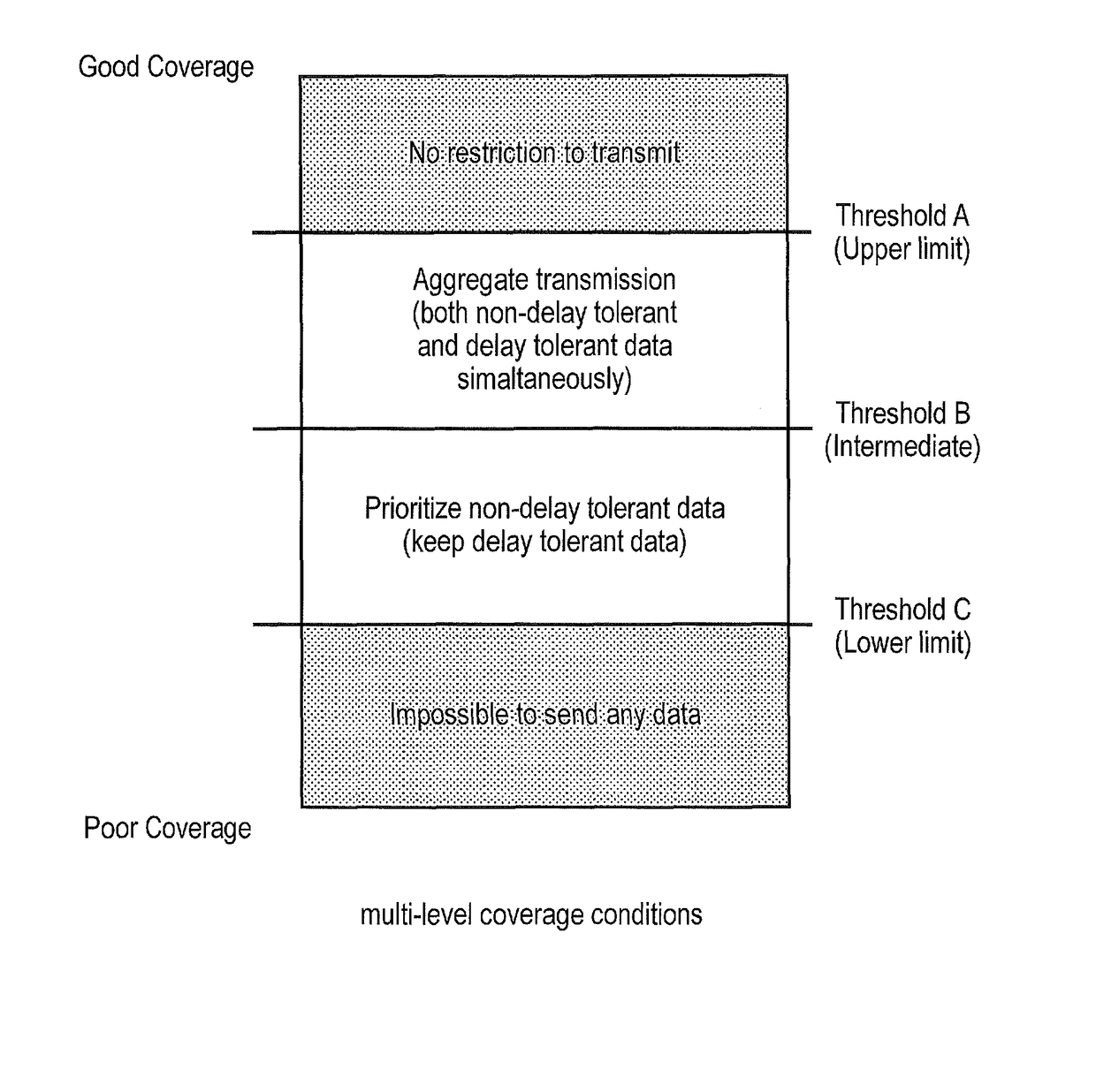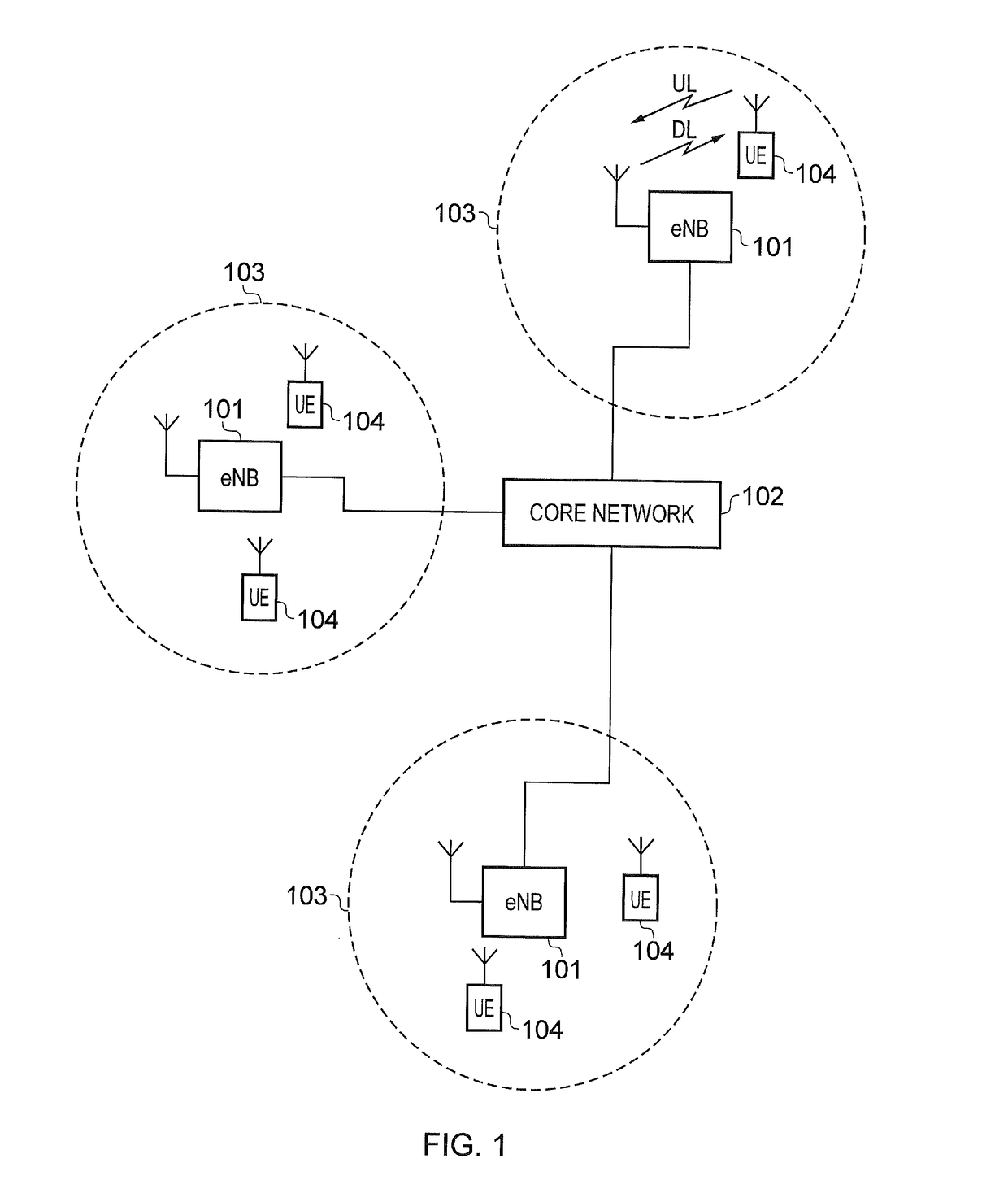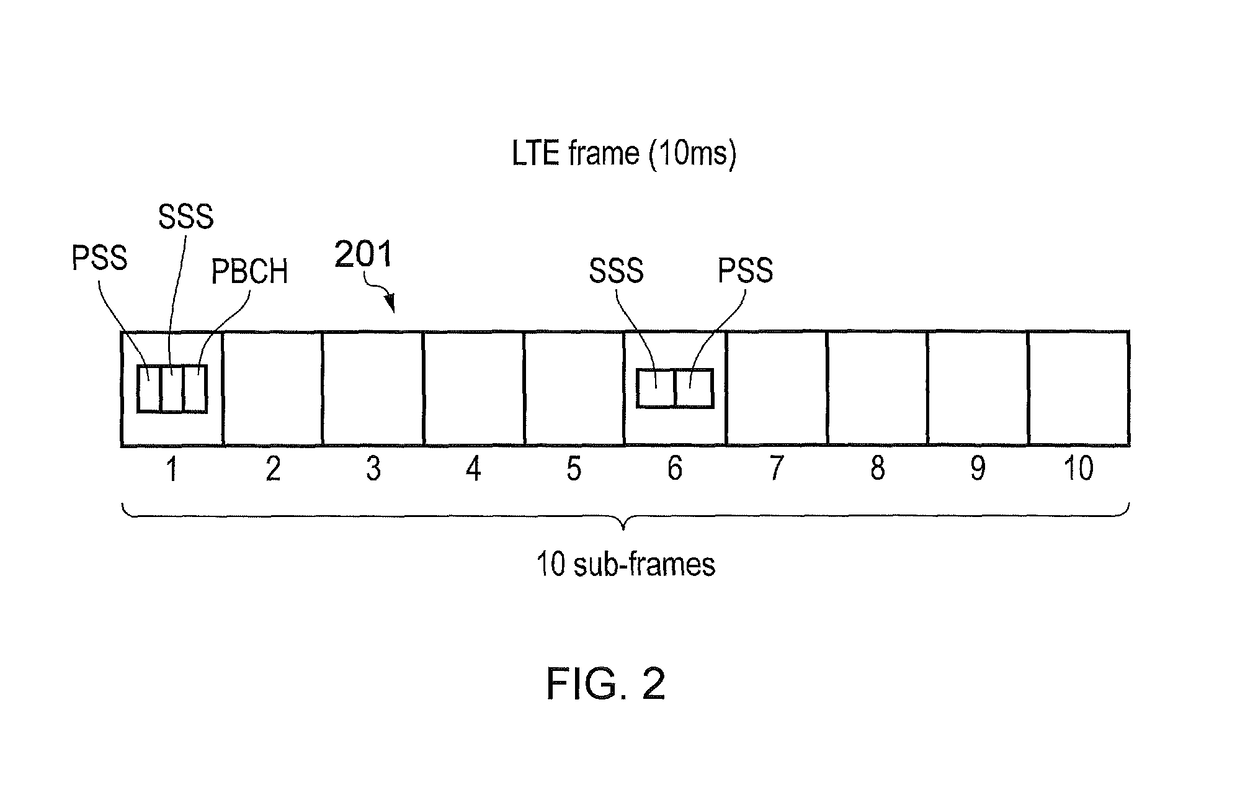Communications terminal and method
a technology applied in the field of communication terminal and communication method, can solve problems such as non-delay-tolerant data packet transmission, and achieve the effect of improving both power conservation and efficiency
- Summary
- Abstract
- Description
- Claims
- Application Information
AI Technical Summary
Benefits of technology
Problems solved by technology
Method used
Image
Examples
example network
[0028]FIG. 1 provides a schematic diagram illustrating the basic functionality of a conventional mobile communications system. In FIG. 1, a mobile communications network includes a plurality of base stations 101 connected to a core network 102. Each base station provides a coverage area 103 (i.e. a cell) within which data can be communicated to and from communications terminals 104. Data is transmitted from a base station 101 to a communications terminal 104 within a coverage area 103 via a radio downlink. The data is transmitted from a communications terminal 104 to a base station 101 via a radio uplink. The core network 102 routes the data to and from the base stations 104 and provides functions such as authentication, mobility management, charging and so on. The base stations 101 provide a wireless access interface comprising the radio uplink and the radio downlink for the communications terminals and form examples of infrastructure equipment or network elements for the mobile co...
example architecture
[0098]FIG. 12 provides a schematic diagram showing part of an adapted LTE mobile telecommunication system arranged in accordance with an example of the present disclosure. The system includes an adapted enhanced Node B (eNB) 1001 connected to a core network 1008 which communicates data to a plurality of conventional LTE terminals 1003, 1007 and reduced capability communications terminals 1002 within a coverage area (i.e. cell) 1004. Each of the reduced capability terminals 1002 has a transceiver unit 1005 which includes a receiver unit capable of receiving signals via a wireless access interface provided by the eNodeB 1001 and a transmitter unit capable of transmitting signals via the wireless access interface.
[0099]In one example embodiment the example reduced capability terminals 1002 include a processor 1708 and a controller 1704 which are adapted to perform the process steps referred to above with reference to FIGS. 7 to 11. Thus, in this example configuration architecture the c...
PUM
 Login to View More
Login to View More Abstract
Description
Claims
Application Information
 Login to View More
Login to View More - R&D
- Intellectual Property
- Life Sciences
- Materials
- Tech Scout
- Unparalleled Data Quality
- Higher Quality Content
- 60% Fewer Hallucinations
Browse by: Latest US Patents, China's latest patents, Technical Efficacy Thesaurus, Application Domain, Technology Topic, Popular Technical Reports.
© 2025 PatSnap. All rights reserved.Legal|Privacy policy|Modern Slavery Act Transparency Statement|Sitemap|About US| Contact US: help@patsnap.com



